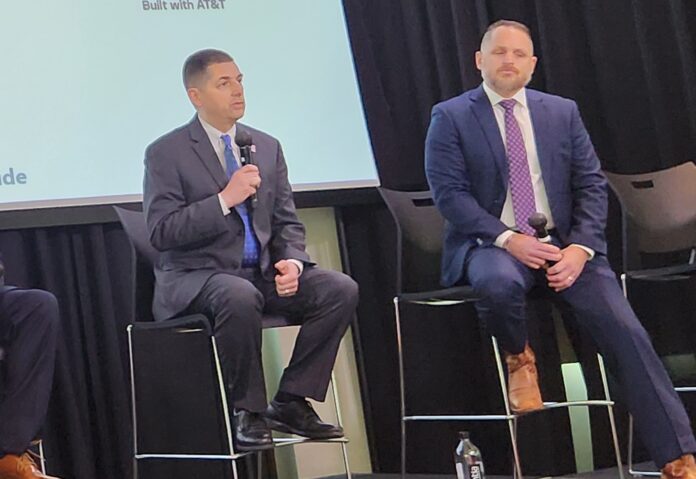WASHINGTON, D.C.—While in-building coverage for cellular and public safety Land Mobile Radio (LMR) systems is a challenge across building use types, it is a particularly urgent one in schools. At last week’s Safer Buildings Coalition Tech and Policy Summit, the issues surrounding first responder communications in school buildings were the front-and-center focus, with Lori Alhadeff, co-founder of the Make Our Schools Safe organization, bringing the matter home by sharing the story of her daughter, Alyssa Alhadeff, who was killed during the 2018 shooting massacre at Marjory Stoneman Douglas High School in Parkland, Florida. Alhadeff and her husband have since been advocating for better school emergency communications through mandating the availability of silent panic buttons in schools, with a number of states adopting or considering “Alyssa’s Law.”
In a panel discussion during the event, some of the many specific challenges facing in-building communications in schools were outlined, including:
-The scale of the problem of wireless and LMR coverage in schools. Most schools are built of materials such as cinder block that block radio frequency signals—cellular, land-mobile radio or otherwise—from effectively penetrating deep inside the buildings, said Chief Alan Perdue, executive director of the Safer Buildings Coalition and a retired fire chief and fire marshal. However, he continued, “Most people aren’t aware that there’s a serious problem. If you talk to school resource officers within the school, they will tell you, our radios don’t work. We see that day in, day out. It’s common,” said Perdue.
-School buildings are often not covered by new fire codes or building standards, which only apply to new construction. So strategies for improving communications coverage that focus on making changes to building or fire codes have limited value in improving the situation for existing buildings that do not have to be brought up to code, and other avenues have to be explored if coverage in those buildings is actually going to be improved.
-When implementing new technology or infrastructure to try to address communication issues in schools, there is also a risk of unintended consequences, panelists agreed, where new technology could conflict or be ineffective in real-world situations if there hasn’t been enough planning or discussion with all of the stakeholders, including local first responder agencies. “It can’t just be a school district wants to do something, they want to comply with an Alyssa’s Law-type piece of legislation, and they acquire a vendor solution and they just expect that it’s going to work. … In many cases, the technology is the easy part. We can install it, we know how to connect wires,” said John Chiarmonte, president of Mission Critical Partners. But there aren’t necessarily official standards for any given safety solution, which may or may not interoperate with other alert systems or give first responders the most useful and relevant data to ensure a fast and appropriate response. New solutions “[have] to be integrated to get the best outcome, the best response,” Chiarmonte said.
-Unfunded mandates also pose an indirect challenge to improving in-building communications for schools, several panelists said. 911 call centers are funded through taxes or fees that often do not fully cover the cost of providing emergency call services, so requiring that new communications features or technology simply be added with no additional funding to make them a reality, ultimately only makes it harder for first responders and public safety telecommunicators to do their jobs effectively.
Still, panelists agreed that between natural disasters, day-to-day issues and frequent mass shootings in schools, it isn’t a matter of “if” a major emergency occurs, it is a question of “when”. And starting conversations with all of the relevant players before legislative mandates come down is part of both making a difference in emergency readiness before a disaster happens and ensuring that if any new school safety mandate does come to fruition, that they can be readily addressed at the local and state levels, said Tim Hay, executive director of the Florida Dept. of Education’s Office of Safe Schools.

